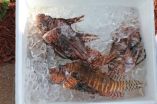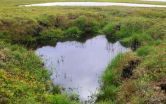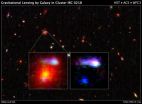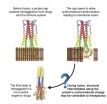(Press-News.org) A long-term follow-up study (HPV-023; NCT00518336) shows the sustained efficacy, immunogenicity and safety of GlaxoSmithKline's human papilloma virus (HPV) vaccine Cervarix. Women vaccinated with the HPV-16/18 AS04-adjuvanted vaccine were followed for more than nine years, and vaccine efficacy (VE) against incident infection was 100%. This is the longest follow-up report for a licensed HPV vaccine. Visit https://www.landesbioscience.com/journals/vaccines/article/29532/ for the full paper.
HPV and vaccination
Persistent infection with HPV has been clearly established as the necessary cause of the overwhelming majority of cervical cancer cases. At least 40 different HPV types are known to infect the genital mucosa, of which approximately 15 are associated with cervical cancer. Among these types, HPV-16 and HPV-18 are the most common and responsible for approximately 70% of cervical cancers. Both HPV-16 and HPV-18 are included in the two licensed HPV vaccines (GSK's Cervarix and Merck's Gardasil), which are now widely available and used.
Evidence of long-term efficacy against vaccine HPV-types is very important, particularly with respect to maintaining public confidence in mass vaccination programs. HPV vaccines initially were recommended for young girls and women 9-25 years of age who have not been exposed to HPV. Since HPV causes not only cervical cancer but also genital warts and anal cancer, HPV vaccines are also recommended for boys in many countries.
Previous clinical studies
An initial double-blind, randomized, multi-center vaccination study (HPV-001; NCT00689741) was started in 2001, followed for up to 27 months, and then followed by a long-term study of the entire cohort for up to 77 months (6,4 years) post initial vaccination (HPV-007; NCT00120848). HPV-007 was followed by an additional extensive study, HPV-023, results of which were recently published in the journal Human Vaccines & Immunotherapeutics.
HPV-023
For this study (HPV-023), participants from Brazil were invited to continue follow-up. 437 women from five centers participated in this 36-month long-term follow-up for 113 months (9.4 years). The aim of the study was to evaluate efficacy against HPV-16/18 infection and associated cyto-histopathological abnormalities, persistence of immunogenicity, and safety of the vaccine. During HPV-023, anti-HPV-16/18 antibodies were measured annually by enzyme-linked immunosorbent assay (ELISA) and pseudovirion-based neutralisation assay (PBNA). Cervical samples were tested for HPV DNA every 6 months, and cyto-pathological examinations were performed annually.
Efficacy against HPV-16/18 infections
During HPV-023, no new HPV-16/18-associated infections or cyto-histopathological abnormalities occurred in the vaccine group. In particular, VE against HPV-16/18 incident infection was 100%. VE was 95.6% against incident infection over 9.4 years. Looking at secondary endpoints, the data showed no cases of either 6- or 12-month HPV-16/18 persistent infection in the vaccine group, versus four cases and one case, respectively, in the placebo group during the 26-months follow-up.
Efficacy against cyto-histopathological abnormalities
VE against cyto-histopathological abnormalities was another secondary endpoint of the study. VE was 97.1% against atypical squamous cells of undetermined significance (ASC-US), 95% against low-grade squamous intraepithelial lesion (LISL), and 100% against cervical intraepithelial neoplasia grade 1 (CIN1+) and grade 2 (CIN2+) associated with HPV-16/18.
Immunogenicity
All vaccines remained seropositive to HPV-16/18, with antibody titers remaining several folds above natural infection levels, as measured by ELISA and PBNA. High and sustained levels of IgG antibodies were observed, reaching a plateau approximately 18 months after the first vaccine dose and remaining stable thereafter. Compared with levels following natural infection, IgG levels in the vaccine group were 10.8-fold and 10.0-fold higher for HPV-16 and HPV-18, respectively.
Confidence in mass vaccination programs
To date, these data represent the longest follow-up reported for a licensed HPV vaccine. There were no safety concerns. The study authors led by Dr Paulo S Naud from the Federal University of Rio Grande do Sul (Porto Alegre, Rio Grande do Sul, Brazil) conclude that these results should provide confidence in the duration of protection offered by HPV mass vaccination programs existing in a number of countries around the world.
Dr Ronald Ellis, Editor-in-Chief of HV&I, comments: "HPV vaccine has been distinctive in having achieved 100% protective efficacy in licensure trials and showing excellent persistence of protective immunity. The data in this article show persistence of protection for about one decade, which should give adolescents and young adults an increased level of confidence in taking this vaccine and being protected against the development of cervical and other cancers."
INFORMATION:
Human Vaccines & Immunotherapeutics is a unique peer-reviewed journal, focused exclusively on vaccines and immunotherapeutics for humans.
Sustained efficacy, immunogenicity, and safety for GlaxoSmithKline's HPV vaccine
2014-07-31
ELSE PRESS RELEASES FROM THIS DATE:
Algorithm reduces use of CT scans when diagnosing children with appendicitis
2014-07-31
ROCHESTER, Minn. — Implementation of an algorithm aimed to diagnose pediatric patients with suspected appendicitis reduces the utilization of computed tomography (CT) scans, without affecting diagnostic accuracy, Mayo Clinic Children's Center researchers have found. The study was recently published in the journal Surgery.
Acute appendicitis is the most common cause of acute abdominal pain in children. Appendicitis occurs when the appendix becomes inflamed and filled with pus. CT scans are often used to diagnose acute appendicitis because they are accurate, widely available ...
Study of bigeye tuna in Northwest Atlantic uses new tracking methods
2014-07-31
AMHERST, Mass. – A first-of-its-kind study of bigeye tuna movements in the northwestern Atlantic Ocean led by Molly Lutcavage, director of the Large Pelagics Research Center at the University of Massachusetts Amherst, found among other things that these fish cover a wide geographical range with pronounced north-south movements from Georges Bank to the Brazilian shelf, and they favor a high-use area off Cape Hatteras southwest of Bermuda for foraging.
This NOAA-funded research, which used a new approach to study one of the most important commercial tuna species in the ...
Unintended consequences: More high school math, science linked to more dropouts
2014-07-31
As U.S. high schools beef up math and science requirements for graduation, researchers at Washington University in St. Louis have found that more rigorous academics drive some students to drop out.
The research team reported in the June/July issue of the journal Educational Researcher that policies increasing the number of required high school math and science courses are linked to higher dropout rates.
"There's been a movement to make education in the United States compare more favorably to education in the rest of the world, and part of that has involved increasing ...
Is it really a concussion? Symptoms overlap with neck injuries so diagnosis is tough call
2014-07-31
BUFFALO, N.Y. – Athletes and others reporting cognitive difficulties after a head injury are usually diagnosed as having had a concussion. But is it really a concussion? A new study published by University at Buffalo medical faculty finds that many of the same symptoms are common to concussions and to injuries to the neck and/or balance system, known collectively as cervical/vestibular injuries.
The research was based on responses about symptoms from 128 patients – some of whom were professional athletes – who were being treated at UB's Concussion Management Clinic in ...
Invasive lionfish likely safe to eat after all
2014-07-31
Scientists have learned that recent fears of invasive lionfish causing fish poisoning may be unfounded. If so, current efforts to control lionfish by fishing derbies and targeted fisheries may remain the best way to control the invasion. And there's a simple way to know for sure whether a lionfish is toxic: test it after it's been cooked.
Pacific lionfish were first reported off the coast of Florida in the 1980s, and have been gaining swiftly in number ever since. They're now found in marine habitats throughout the tropical and subtropical Western Atlantic, Caribbean ...
Certain Arctic lakes store more greenhouse gases than they release
2014-07-31
New research, supported by the National Science Foundation (NSF), counters a widely-held scientific view that thawing permafrost uniformly accelerates atmospheric warming, indicating instead that certain Arctic lakes store more greenhouse gases than they emit into the atmosphere.
The study, published this week in the journal Nature, focuses on thermokarst lakes, which occur as permafrost thaws and creates surface depressions that fill with melted fresh water, converting what was previously frozen land into lakes.
The research suggests that Arctic thermokarst lakes ...
NASA's Fermi space telescope reveals new source of gamma rays
2014-07-31
Observations by NASA's Fermi Gamma-ray Space Telescope of several stellar eruptions, called novae, firmly establish these relatively common outbursts almost always produce gamma rays, the most energetic form of light.
"There's a saying that one is a fluke, two is a coincidence, and three is a class, and we're now at four novae and counting with Fermi," said Teddy Cheung, an astrophysicist at the Naval Research Laboratory in Washington, and the lead author of a paper reporting the findings in the Aug. 1 edition of the journal Science.
A nova is a sudden, short-lived brightening ...
Study finds physical link to strange electronic behavior
2014-07-31
HOUSTON -- (July 31, 2014) -- Scientists have new clues this week about one of the baffling electronic properties of the iron-based high-temperature superconductor barium iron nickel arsenide. A Rice University-led team of U.S., German and Chinese physicists has published the first evidence, based on sophisticated neutron measurements, of a link between magnetic properties and the material's tendency, at sufficiently low temperatures, to become a better conductor of electricity in some directions than in others.
The odd behavior, which has been documented in a number ...
Hubble shows farthest lensing galaxy yields clues to early universe
2014-07-31
Astronomers using NASA's Hubble Space Telescope have unexpectedly discovered the most distant galaxy that acts as a cosmic magnifying glass. Seen here as it looked 9.6 billion years ago, this monster elliptical galaxy breaks the previous record-holder by 200 million years.
These "lensing" galaxies are so massive that their gravity bends, magnifies, and distorts light from objects behind it, a phenomenon called gravitational lensing. Finding one in such a small area of the sky is so rare that you would normally have to survey a region hundreds of times larger to find just ...
Researchers uncover clues to flu's mechanisms
2014-07-31
HOUSTON – (July 31, 2014) – A flu virus acts like a Trojan horse as it attacks and infects host cells. Scientists at Rice University and Baylor College of Medicine have acquired a clearer view of the well-hidden mechanism involved.
Their computer simulations may lead to new strategies to stop influenza, perhaps even a one-size-fits-all vaccine.
The discovery detailed this week in the Proceedings of the National Academy of Science shows the path taken by hemagglutinin, a glycoprotein that rides the surface of the influenza virus, as it releases fusion peptides to invade ...








